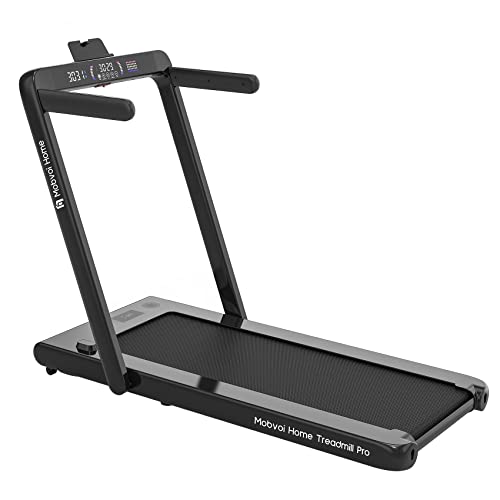Why Gym Treadmill Isn't As Easy As You Imagine

Treadmills: A Comprehensive Guide to Understanding Their Functionality, Benefits, and Appropriate Selection
Intro
Treadmills have become a staple in modern-day fitness routines, both in homes and gyms worldwide. They provide a practical and efficient method to keep cardiovascular health, increase endurance, and assist in weight management. Erma Elicker explores the different types of treadmills, their advantages, functions to think about when buying, and some FAQs to direct users in making notified decisions.
Kinds of Treadmills
When it concerns selecting a treadmill, it is crucial to comprehend the various types readily available in the market. Here are the primary classifications:
1. Handbook Treadmills
- Mechanism: These treadmills have a simple design and count on the user's efforts to move the belt.
- Pros: More budget friendly, quieter operation, no electrical energy needed.
- Cons: Limited functions, might not supply the same series of workout strength.
2. Motorized Treadmills
- System: Powered by a motor that drives the belt, allowing users to walk or run at a set rate.
- Pros: Greater range of speeds and inclines, equipped with numerous functions such as heart rate monitors and workout programs.
- Cons: More expensive and may need more upkeep.
3. Folding Treadmills
- System: Designed for those with restricted space, these treadmills can be folded for easy storage.
- Pros: Space-saving, typically motorized, flexible features.
- Cons: May be less long lasting than non-folding designs.
4. Business Treadmills
- Mechanism: High-quality machines created for use in gyms and gym.
- Pros: Built to stand up to heavy use, advanced functions, frequently include service warranties.
- Cons: Pricey and not ideal for home use due to size.
5. Curved Treadmills
- System: A special design that allows users to move the belt utilizing their own energy.
- Pros: Offers a more natural running experience, promotes better running type.
- Cons: More pricey and can be noisier.
| Treadmill Type | Pros | Cons |
|---|---|---|
| Manual | Cost effective, no electrical energy required | Minimal features |
| Motorized | Range of speeds, advanced functions | Maintenance required |
| Folding | Space-saving, often motorized | May lack durability |
| Business | Constructed to last, professional-grade functions | Expensive |
| Curved | Natural running experience, promotes excellent form | Greater rate |
Benefits of Using Treadmills
Treadmills provide numerous benefits that can contribute to one's general fitness and health goals. Some of these benefits include:
- Convenient Workouts: Treadmills allow users to work out inside despite weather condition conditions.
- Cardiovascular Health: Regular use can enhance heart health by increasing stamina and promoting healthy circulation.
- Weight Management: Effective for burning calories, which aids in weight-loss and management.
- Adjustable Workouts: Users can control speed, incline, and duration to develop customized workout experiences.
- Security: Treadmills provide a foreseeable surface area, decreasing the risk of falls compared to outdoor running.
- Multifunctional: Many treadmills featured functions like heart rate displays, workout programs, and even home entertainment systems.
Picking the Right Treadmill
When selecting a treadmill, potential purchasers must think about several essential aspects:
Features to Consider:
- Motor Power: Typically determined in horsepower (HP), a motor strength of at least 2.5 HP is suggested for serious runners.
- Belt Size: A longer and wider belt accommodates various stride lengths, offering convenience during exercises.
- Slope Settings: Adjustable incline features replicate outside hill running and can increase exercise intensity.
- Weight Capacity: Ensure the treadmill can support the user's weight for security and durability.
- Console Features: Look for easy to use dashboards, workout programs, and Bluetooth compatibility for streaming music or other functions.
Budget Considerations
- Under ₤ 500: Entry-level manual treadmills suitable for casual walkers.
- ₤ 500 - ₤ 1,500: Mid-range motorized treadmills that offer more functions and much better resilience.
- ₤ 1,500 - ₤ 3,000: High-end models with innovative technology, larger motors, and longer service warranties.
- Over ₤ 3,000: Commercial-grade treadmills perfect for frequent use in gyms or training facilities.
Often Asked Questions (FAQs)
1. How often should I utilize a treadmill?
It is advised to use a treadmill a minimum of three to 5 times a week, integrating numerous strength levels for best results.
2. Can I slim down by using a treadmill?
Yes, constant use of a treadmill can contribute to weight-loss, especially when integrated with a well balanced diet plan and strength training.
3. What is the very best speed to walk on a treadmill for novices?
A speed of 3 to 4 miles per hour is an ideal range for novices. It's important to begin sluggish and gradually increase pace as convenience and stamina enhance.
4. Do I require to use a treadmill if I already run outdoors?
Using a treadmill can supply fringe benefits, such as controlled environments and varied exercises (incline, periods) that are not constantly possible outdoors.
5. How do I keep my treadmill?
Regular maintenance consists of lubing the belt, cleaning up the deck and console, and inspecting the motor for optimum performance.
Treadmills are important tools for those seeking to boost their physical fitness levels in a controlled and practical way. With different types available, understanding their features and advantages is vital for making an informed purchase. By considering personal exercise requirements, space schedule, and budget restrictions, people can discover the most suitable treadmill that fits their way of life. Integrating treadmill workouts into a well balanced fitness regimen can cause better health results and a pleasurable workout experience.

